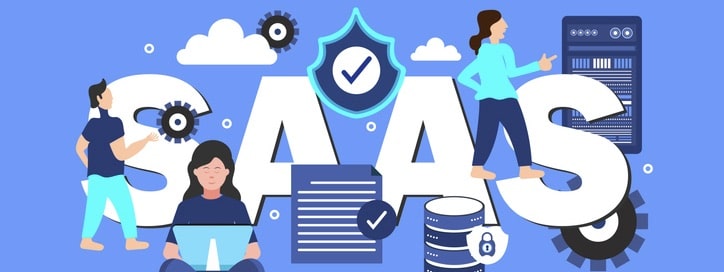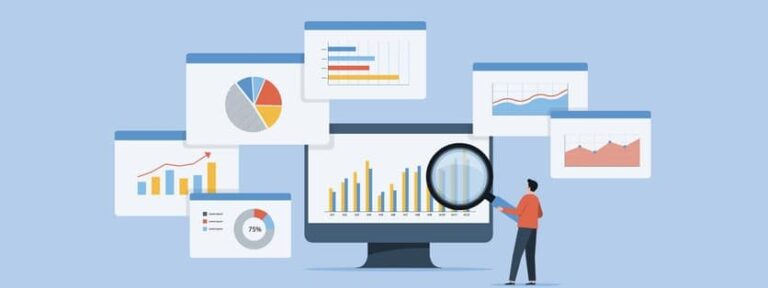Selling SaaS products can be tricky, especially in a B2B space with multiple decision-makers.
For example, marketing automation software will have marketing executives as end-users. However, the marketing head usually chooses the right tool based on budget, functionalities, and customer support. Their decision is further influenced by the overall marketing spend set by the business head.
The more complex the product, the longer the sales cycle with more stakeholders. You must stay prepared for twists, turns, and potential dead ends. Different customer behaviors will influence the decision at each of these multiple touchpoints.
So, what’s the solution if you want to smoothen and streamline the customer journey in the B2B SaaS space?
Understanding customer journey mapping
A customer journey map will show how a typical buyer moves through the sales funnel from initial interest to purchasing.
This powerful tool helps you understand how customers interact with your product and, accordingly, simplifies the complex decision process. It enables you to understand and optimize every step of customer interaction with your product.
When you map a SaaS customer journey, you can:
- Understand your customers’ perspectives on seeking a business solution through your product.
- Identify pain points that create business process bottlenecks.
- Optimize their experience by making their journey smoother, faster, and more enjoyable.
- Drive satisfaction that leads to retention and growth
Let’s explore customer journey mapping in detail.
How to map the customer journey
Mapping the B2B SaaS customer journey requires:
- Understanding your customers
- Studying how they interact with your business
- Finding ways to provide value through compelling products at competitive price points
Catering to sophisticated buyer behaviors and lengthy decision processes needs a strategic approach. Here are some tips to get you started.
1. Clearly define each stage of the customer journey
Break down the journey into different stages to study the buyer persona and tailor your strategies.
Here’s a framework to adapt for crucial customer journey stages.
A. Awareness
At this stage, customers find and get to know about B2B SaaS products. The marketing teams would often drive campaigns, do social media posts, create and share videos, etc. This is all to get traction and create a buzz around the product through content on:
- Feature comparisons
- Demo requests
- Case studies
- Customer testimonials, etc.
Essential action items here:
- Creating personalized demos
- Offering free trials
- Sharing customer testimonials
- Nurturing leads through email campaigns.
B. Decision
At this stage, the buyer has almost made their decision considering their needs and comparing features, prices, and benefits. Also, contracts are signed and communicated to get the sale in place. Usually, the contract management system triggers a series of actions from requisition to negotiation, approval, and execution.
This is where leads are engaged for:
- Negotiating prices
- Finalizing contracts
- Getting internal approvals.
Here, sales team to be prepared for:
- Making sales calls
- Sending proposals
- Addressing users’ concerns
- Providing transparent pricing and terms.
C. Onboarding/Implementation
You’ve earned a customer so the next step is to ensure smooth onboarding. This requires the product team to help set up the software, integrate it with existing systems, and ensure smooth onboarding.
At this point, the customer success team will also chip in to help new users with:
- Onboarding tutorials
- Access to knowledge base articles
- Dedicated customer support lines and contact information
- Setting up training webinars, etc.
Finally, your customers will use the product, but your job is to make it easier for them. Focus on bettering user experience to drive subscription renewals, plan upgrades, usage expansion, and positive word of mouth.
2. Visualize the customer journey
Once the stages are defined, it’s time to build a visual narrative of how a customer moves from point A to point B before making a decision. Each team will have different roles to play at each stage.
For instance, the marketing team will work to generate the lead, the sales team will take over during the negotiation process, and the product team may contribute when there is a need to provide product demos.
Even for upselling and cross-selling, you’d need assistance from the customer support team that will provide top-notch services to retain and upgrade usage-tiers of the existing customers.
Once these touchpoints are mapped, you can visualize the customer journey to:
- Get a holistic view of an entire customer journey at a glance
- Identify pain points and opportunities to improve their experience.
- Break down silos to ensure every team is aligned on the customer’s journey.
- Track progress on how customers move through the journey and measure the impact of your efforts to improve it.
Now, let’s unpack key action items for effective customer journey visualization.
You can use customer journey mapping software, a whiteboard, or even a spreadsheet for this.
Here’s what you can include in your map:
- Stages: Clearly define each stage of the customer journey.
- Touchpoints: List customers’ key interactions with your company at each stage.
- Channels: Identify and label channels that drive interactions (e.g., website, email, phone, social media).
- Customer emotions: Create a customer feedback loop to analyze how customers feel at each stage before buying a SaaS product(e.g., confused, confident, satisfied, frustrated, etc.).
- Pain points: Highlight key areas where customers seem to struggle or encounter friction towards making a purchase decision.
- Opportunities: Identify factors that need some ramifications to better the customer experience.
- Metrics: Track key metrics like customer satisfaction, conversion rates, and retention rates to measure the success at each touchpoint.
3. Collect data from multiple sources before mapping a journey
A Gartner report suggests that 65 percent of B2B sales businesses will be fully data-driven by 2026. Hence, it’s ideal for a B2B SaaS brand to rely on data collected from different sources before making a decision.
One approach to collecting and using data from multiple sources is to combine quantitative and qualitative data from various sources like —
- Analytics: Analyze absolute numbers for website traffic, product usage amongst existing users, feature adoption, churn rates, etc., to see where users drop off and identify popular features with areas for improvement in your product.
- Customer surveys and interviews: Conduct customer surveys to learn about their experiences, pain points, and expectations.
- Sales and support teams: Let your frontline staff collect first-hand customer feedback through casual interactions.
- Social media: Use social monitoring tools that help analyze conversations and sentiments about your product.
Conclusion
Mapping your customer’s journey can be challenging. But with the key tips mentioned above, you can get started in the right direction. These factors will help you navigate the complexities that create bottlenecks at each touchpoint.
A well-crafted customer journey map is a strategic roadmap to help you build long-lasting customer relationships.








